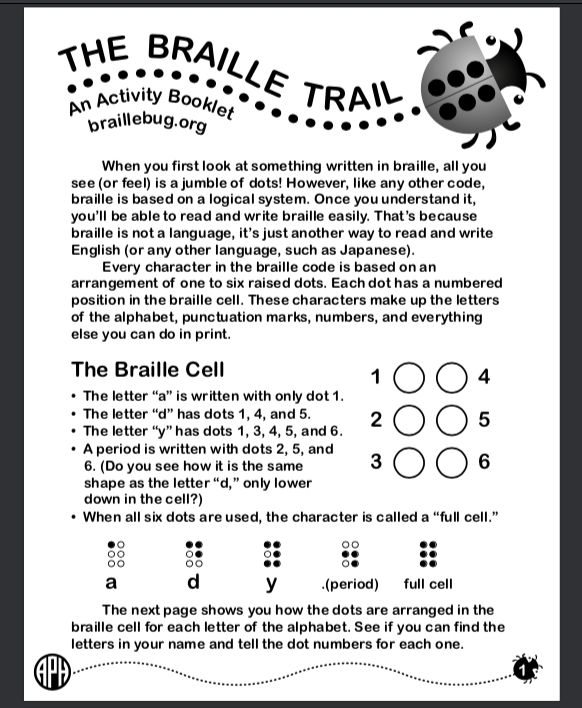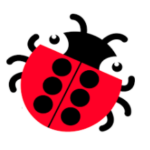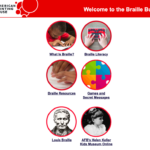WRAP-UP
Blindness and Low Vision Unit
Now that you’ve had the Blindness and Low Vision unit, here are a few follow up activities so you can learn more and have fun. Choose one, two or all three!
Read the book
Six Dots: A Story of Young Louis Braille, by Jen Bryant
This book is also available for free as a digital video here: https://www.hoopladigital.com/title/11975827
And, as a free e-book through the Minuteman Library Network: https://minuteman.overdrive.com/media/2621129
Need more help? Check with your school librarian or your local library. For more ways to find books, you can click this link: Find Books!
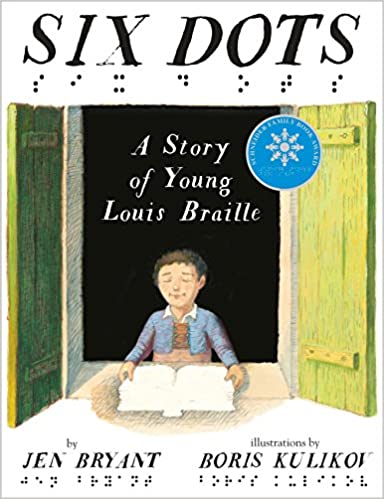
If you have any trouble getting the book from a library, here is a link to a read-aloud of the book on YouTube:
Try This!
After you read this book, try this activity: Use your other senses to get information.
In the book, Louis uses his sense of hearing, smell and touch to get information about the world around him. Find a quiet space to sit inside or outside and see how many things you can identify:
- Using your ears,
- Using your sense of smell,
- And finally, see if there are things nearby that you can figure out by touch. You can even have someone at home bring you some items to guess!
- Take some notes about what you learned. What was easy? What was more challenging?
Braille Activity
Try This!
Offline activity: You can download and print this activity booklet from Braillebug.org or use on your device with some paper to write things down. In the workbook, you will learn what braille is and that it is an organized code, even if it may look like a jumble of dots!
Have some fun with the Math is Fun online braille translator:

Use this online translator to type in words or phrases and see what it looks like in braille. You can even save it as a picture or print it! Scroll down on the page to find out more about how to use the braille translator and the difference between Grade 1 and Grade 2 braille. And, go to https://www.mathsisfun.com/braille.html for more information about the braille alphabet, numbers and punctuation.
Things to talk about after you try this activity:
- What do you think about braille? Did you try to make your name?
- Were you able to figure out any of the words in the worksheets?
- Have you ever noticed braille when you are out and about? (hint: pay attention when you are in public buildings including schools and see if you can find any braille!).
- People feel more included when they can communicate with others. As you can see, Braille is one method someone with blindness or low vision might use to read and write. What are some other methods that you learned about in this unit?
Interview an Expert!
Ask a parent if you have a relative or family friend with blindness or low vision. Contact that person and interview them using this conversation starter and questions (but feel free to ask some of your own, too!).
Try This!
Interview an Expert with a Blindness or Low Vision
Conversation Starter – Use this screen or download the pdf and print:
Interview an Expert with Blindness or Low Vision PDF
Thank you for talking to me. I am learning about blindness and low vision through the Understanding Our Differences program at school. I’d like to ask you a few questions so I can understand your experiences.
- How and when did your blindness or low vision start? Was it something you had from when you were born, from an illness or getting older, or from an injury?
- Do you use any special techniques, strategies or technology to help you get around, or to accomplish things you want to do? Please describe those to me and give me an example or two of what you use and how it helps.
- Have you ever had someone treat you differently because you have blindness or low vision? How do you want people to treat you? What is your favorite way for people to offer help?
- What kinds of hobbies do you have? Do you have a pet, either now or earlier? What activities do you enjoy?
Thank you very much for speaking with me today.
I’ve learned that it’s important to understand people’s experiences with disabilities, and also to understand what people have in common. (Tell the person if you too like one of their hobbies or interests.)
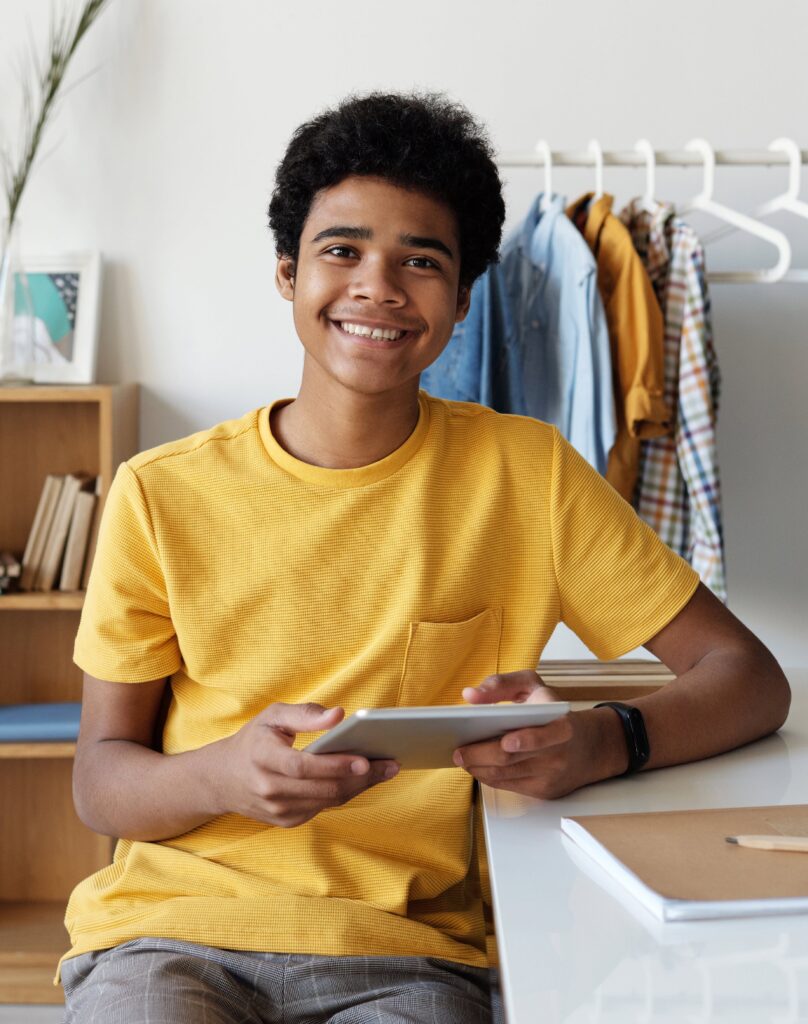
The Understanding Our Differences curriculum is protected by copyright, © 2010-2023. Understanding Our Differences, Inc. All rights reserved. The Understanding Our Differences curriculum is not to be altered, photocopied, shared with other entities, or reproduced in any way, and is not to be resold.

